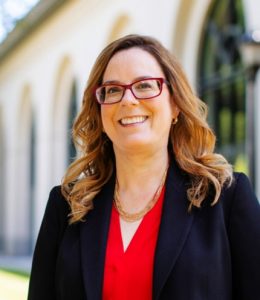Britton Chance Distinguished Lecture in Engineering and Medicine
This Distinguished Lecture Honors Britton Chance…
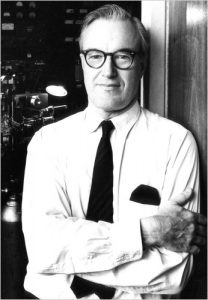 Britton Chance (1913-2010) was a world leader in transforming theoretical science into useful biomedical and clinical applications. Among his pioneering contributions to fundamental biomedical science were his discovery of numerous enzyme-substrate compounds, World War II development of computers for Radar, the elucidation of the fundamental principles of control of bioenergetics and metabolism, the first human subject study using 31P NMR (phosphorous nuclear magnetic resonance) spectroscopy and more recently optical spectroscopy and imaging of human brain and breast. Through decades of scholarly mentorship of colleagues in disciplines ranging from mathematics to clinical medicine, he brought additional distinction to this University and multiplied its contributions to improving the human condition.
Britton Chance (1913-2010) was a world leader in transforming theoretical science into useful biomedical and clinical applications. Among his pioneering contributions to fundamental biomedical science were his discovery of numerous enzyme-substrate compounds, World War II development of computers for Radar, the elucidation of the fundamental principles of control of bioenergetics and metabolism, the first human subject study using 31P NMR (phosphorous nuclear magnetic resonance) spectroscopy and more recently optical spectroscopy and imaging of human brain and breast. Through decades of scholarly mentorship of colleagues in disciplines ranging from mathematics to clinical medicine, he brought additional distinction to this University and multiplied its contributions to improving the human condition.
Professor Chance was Eldridge Reeves Johnson University Professor of Biophysics, Physical Chemistry and Radiologic Physics at Penn. He received his undergraduate degree from Penn’s Towne Scientific School in 1935 and doctoral degrees from both Penn and the University of Cambridge. He was a member of the National Academy of Sciences and of the Institute of Medicine and a Foreign Member of the Royal Society of London. Among very many other recognitions, he received the National Medal of Science, the Benjamin Franklin Medal from the American Philosophical Society, the Biological Physics Prize from the American Physical Society, and honorary degrees from the Karolinska Institut, the Medical College of Ohio at Toledo, Semmelweis University, Hahnemann Medical College and the Universities of Pennsylvania, Helsinki, Dusseldorf and Buenos Aires. In his honor, Huazhong University of Science and Technology named a major laboratory as the Britton Chance Center for Biomedical Photonics.
2024 Distinguished Lecturer
Jennifer Cochran
Macovski Professor of Bioengineering
Senior Associate Vice Provost of Research
Stanford University
“Next-generation Cancer Therapeutics Guided by Structural, Mechanistic, and Biophysical Properties“
Wednesday, September 25, 2024, 3:30 PM, Wu and Chen Auditorium, Levine Hall
Bio & Abstract:
Jennifer Cochran is the Macovski Professor of Bioengineering and Senior Associate Vice Provost for Research at Stanford University. Prof. Cochran was recruited in 2005 as one of the founding faculty members in Stanford’s Bioengineering department and served as its Chair from 2017-2022. She is also a member of the chemical engineering, immunology, biophysics, and cancer biology graduate groups. Her research and translational interests focus on protein-based drug discovery for applications in oncology, immunology, and regenerative medicine. Prof. Cochran’s work also encompasses designer protein inputs and biochemical circuits for engineered cell therapies, new tools for high throughput protein engineering and analysis, and molecular engineering for climate and sustainability solutions. Leveraging her entrepreneurial experience, she enjoys mentoring others on technology transfer and life science company formation and is the faculty Director of Protein Therapeutics at Stanford’s Innovative Medicine Accelerator. Dr. Cochran’s seminar will discuss protein engineering approaches for targeted cancer treatment, guided by macromolecular analysis and biophysical design criteria. Examples include structural and mechanistic elucidation of protein-based immunotherapeutics, engineered ligand and receptor inhibitors, and tumor-targeted immunostimulants and chemotherapeutics. The Britton Chance lecture has special meaning as she considers Penn part of her educational roots, having spent time in the Stellar Chance Laboratory building as a postdoctoral fellow.
Previous Britton Chance Distinguished Lecturers
2023

Rob Phillips
Fred and Nancy Morris Professor
California Institute of Technology
“A Language Whose Characters are Triangles”
Wednesday, November 15, 2023
Abstract: One of the most intriguing outcomes of casting our thinking about the world around us in mathematical terms is that phenomena that were thought to be quite distinct are instead revealed as being the “same.” Thinkers as long ago as Pliny the Elder made observations on active matter noting: “It is a peculiarity of the starling to fly in troops, as it were, and then to wheel round in a globular mass like a ball, the central troop acting as a pivot for the rest.’’ In this talk I will introduce field theory and the emergence of the modern theory of active matter as formulated by Toner and Tu to describe the collective motions of animals such as the giant herds of wildebeest on the plains of the Serengeti. We will then use active matter theory at a billion fold smaller scale to describe the motion of “flocks’’ of actin that power the movement of the single-celled parasites that cause malaria and toxoplasmosis. Our theoretical analysis will be used as a tool to interpret single-cell/single-molecule experiments on the dynamics of these fascinating parasitic organisms. All of these topics will serve as an invitation to a broader discussion of how the study of the living world is enriched by adopting the mindset that led Galileo to his assertion that the language of the natural world is mathematical.
Biography: From the age of 17, my life has been driven primarily by science, coloring everything from the books I read to the destinations I choose for travel, which now includes having led 15+ field trips in evolutionary biology all around the world. My adventures in learning physics included working my way from a several year stint as an electrician to becoming a physics graduate student. Although my first love was physics and mathematics, as I learned more about the living world, it seemed that many of the most exciting problems in science are found there. As a result, I made the switch from materials physics to biology when I moved from a faculty position at Brown University to Caltech. The NIH Director’s Pioneer Award gave me the chance to become a full-time physical biologist, with a group that aims to be equally adept at theory and experiments, and the MIRA award has been similarly transformative. Much of my biological education and taste in biological questions has come from the privilege of teaching and doing research with a host of fantastic collaborators including Steve Quake (physical biology laboratory), Dianne Newman (freshman biology), Victoria Orphan (evolution), Doug Rees (structural biology and physiology), David Baltimore(virology and immunology) and Eric Davidson (gene regulatory networks) and in my decade long association with the Marine Biological Laboratory in Woods Hole. Until recently, I served as Physiology Course co-director with Wallace Marshall and Jennifer Lippincott-Schwartz. Most importantly, my nearly two decades of work with Jane Kondev (Brandeis University), Julie Theriot (University of Washington), Hernan Garcia (UC Berkeley), Christina Hueschen (Stanford University), Thomas Lecuit (College de France), Wallace Marshall (UCSF), and Ron Milo (Weizmann Institute) on our books “Physical Biology of the Cell”, “Cell Biology by the Numbers” and “The Principles of Biological Shape” has shown me how quantitative thinking can serve as an engine of biological discovery. Stimulated by these experiences, my laboratory has focused on careful predictive modeling in physical biology complemented by precision measurements at both the single-molecule and single-cell level to precisely test those predictions.
2022
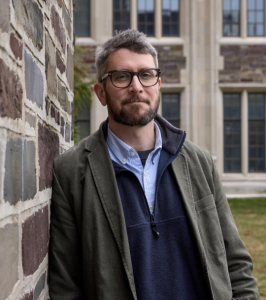
Clifford Brangwynne
June K. Wu ’92 Professor
Chemical and Biological Engineering
Princeton Engineering
“A Fluid Paradigm for Biological Organization”
Wednesday, October 26, 2022
Abstract: Living cells are often mistakenly viewed as functioning through a clockwork-like set of interactions among their biomolecular building blocks, like machines on a factory floor. But the processes taking place within cells are vastly more wet and dynamic than many textbooks would have us believe. Over the last decade, research combining insights from materials physics and cell biology has ushered in new paradigm for understanding
how this chaotic intracellular environment is brought to order, through the collective condensation of disordered of biomolecules into droplets of living information. Intracellular condensates represent viscoelastic states of biomolecular matter, which facilitate dozens of different intracellular processes, and appear to underlie various cancers and neurodegenerative diseases like Alzheimer’s and ALS. In this talk, I will discuss some of our early and more recent adventures in this new field, and highlight the challenges and opportunities for the next decade.
Biography: Cliff Brangwynne is the June K. Wu ‘92 Professor of Chemical and Biological Engineering at Princeton University, a Howard Hughes Medical Institute Investigator, and Director of the Princeton Bioengineering Initiative. He obtained a B.S. in Materials Science from Carnegie Mellon University in 2001, and PhD in Applied Physics in 2007 from Harvard University. He was a visiting fellow at the Max Planck Institute for the Physics of Complex Systems in Dresden, and was a Helen Hay Whitney Postdoctoral Fellow at the Max Planck Institute for Molecular Cell Biology and Genetics in Dresden. Since 2011 he has been a faculty member in the Department of Chemical and Biological Engineering at Princeton University. His primary research interests are in biological self-assembly, particularly in the role of intracellular liquid-liquid phase separation. Dr. Brangwynne is the recipient of numerous awards including a Searle Scholar Award, a Macarthur Fellowship, Wiley Prize, HFSP Nakasone Award, and most recently a Breakthrough Prize.
2020
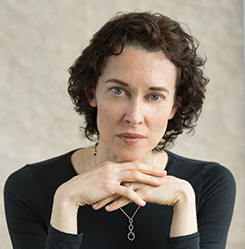
Jennifer Elisseeff
Morton Goldberg Professor and Director
Translational Tissue Engineering Center
Johns Hopkins University
“Regenerative Immunology: The Role of Technology Translation in Guiding Discovery”
Wednesday, January 29, 2020
Abstract: Biomaterial implants have a long history in the clinic but regenerative biomaterials and regenerative medicine therapies in general have been slow to reach patients. Clinical translation provides a unique and critical opportunity to investigate the key therapeutic drivers of technology efficacy in people. Careful evaluation of clinical outcomes and (re)evaluation of design parameters is central to improving research and technology development. A key outcome of our clinical translation experiences in orthopedics and plastic surgery was the unexpected discovery of adaptive immune cells around synthetic implants. We are now working to understand the role of the immune system and cellular senescence in the biomaterial response and repair across different tissues. This new therapeutic target serves as the basis for the design of regenerative immunotherapies.
Biography: Jennifer Elisseeff is the Morton Goldberg Professor and Director of the Translational Tissue Engineering Center at Johns Hopkins’ Department of Biomedical Engineering and the Wilmer Eye Institute with appointments in Chemical and Biological Engineering, Materials Science and Orthopedic Surgery. She received a bachelor’s degree in chemistry from Carnegie Mellon University and a PhD in Medical Engineering from the Harvard–MIT Division of Health Sciences and Technology. She was a Fellow at the National Institute of General Medical Sciences, Pharmacology Research Associate Program, where she worked in the National Institute of Dental and Craniofacial Research.
Dr. Elisseeff is committed to the translation of regenerative biomaterials and has founded several companies and participates in several industry advisory boards including the State of Maryland’s Technology Development Corporation (TEDCO). She was elected a Fellow of the American Institute of Medical and Biological Engineering, the National Academy of Inventors, and a Young Global Leader by World Economic Forum. In 2018, she was elected to the National Academy of Engineering and National Academy of Medicine.
2018

David Schaffer
Professor
Chemical and Biomolecular Engineering
University of California, Berkeley
“Directed Evolution of New Viruses for Therapeutic Gene Delivery”
Wednesday, November 7, 2018
Abstract: Gene therapy has experienced an increasing number of successful human clinical trials – particularly ones using delivery vehicles or vectors based on adeno-associated viruses (AAV) – including trials for hemophilia B, Leber’s congenital amaurosis (LCA2), and spinal muscular atrophy. This progress recently led to the first FDA approval of an AAV-based gene therapy (for LCA2) in December, 2017. These clear successes have been made possible by the identification of disease targets that are suitable for the delivery properties of natural variants of AAV. However, vectors in general face a number of barriers and challenges that limit their efficacy for other disease targets, including pre-existing antibodies against AAVs, suboptimal biodistribution, limited spread within tissues, an inability to target delivery to specific cells, and/or limited delivery efficiency to target cells. These barriers are not surprising, since the parent viruses upon which vectors are based were not evolved by nature for our convenience to use as human therapeutics. Unfortunately, for most applications, there is insufficient mechanistic knowledge of underlying virus structure-function relationships to empower rational design improvements.
As an alternative, we were the first to develop and have since been implementing directed evolution – the iterative genetic diversification of the viral genome and functional selection for desired properties – to engineer highly optimized, next generation AAV variants for delivery to any cell or tissue target. We have genetically diversified AAV using a broad range of approaches including random point mutagenesis of the cap gene, insertion of random peptide sequences into the AAV capsid, recombination of cap genes from a number of parental serotypes to create random chimeras, and construction of ancestral AAV libraries. The resulting large (~109) libraries are then phenotypically selected for improved function in small and large animal models, yielding AAVs capable of highly efficient and targeted delivery in vivo and thereby laying a foundation for translating engineered AAVs into human clinical trials.
Biography: David Schaffer is a Professor of Chemical and Biomolecular Engineering, Bioengineering, and Neuroscience at the University of California, Berkeley, where he also serves as the Director of the Berkeley Stem Cell Center. He received a B.S. in Chemical Engineering from Stanford University in 1993 and a Ph.D. in Chemical Engineering from MIT in 1998. He then conducted a postdoctoral fellowship at the Salk Institute for Biological Studies before joining the University of California at Berkeley in 1999. There, he applies engineering principles to enhance stem cell and gene therapies, work that includes novel approaches for molecular engineering and evolution of new viral vectors as well as new technologies to investigate and control stem cell fate decisions. David Schaffer has received an NSF CAREER Award, Office of Naval Research Young Investigator Award, Whitaker Foundation Young Investigator Award, and was named a Technology Review Top 100 Innovator. He was also awarded the American Institute of Chemical Engineers Pharmaceutical and Bioengineering Award in 2017, the American Chemical Society Marvin Johnson Award in 2016, the American Chemical Society BIOT Division Young Investigator Award in 2006, the Biomedical Engineering Society Rita Shaffer Young Investigator Award in 2000, and was inducted into the College of Fellows of the American Institute of Medical and Biological Engineering in 2010.
2017
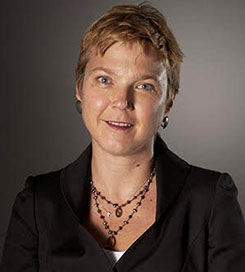
Linda G. Griffith
S.E.T.I. Professor
Biological and Mechanical Engineering
Massachusetts Institute of Technology
“PhysioMimetics: How Integration of Systems Biology with Organs-on-Chips May Humanize Therapeutic Development”
Wednesday, October 25, 2017
Abstract: “Mice are not little people” is a refrain that is becoming louder as the strengths and weaknesses of animal models of human disease become more apparent. At the same time, three emerging approaches are headed toward integration: systems biology analysis of cell-to-cell and intracellular signaling networks in patient-derived samples; 3D tissue-engineered models of human organ systems, often made from stem cells; and micro and mesofluidic devices that enable 3D “microphysiological systems” (MPSs) to be sustained, interconnected, perturbed and analyzed for weeks in culture. This talk will describe the recent work of Dr. Griffith and her group in integrating these approaches to study chronic inflammatory diseases, with an emphasis on building and characterizing 3D mucosal barrier models of endometrium and gut, and the deployment of these models to analyze inflammation and multi-MPS cross talk.
Biography: Linda G. Griffith, Ph.D. (UC Berkeley, Chemical Engineering), is the School of Engineering Teaching Innovation Professor of Biological and Mechanical Engineering and MacVicar Teaching Fellow at MIT, where she directs the Center for Gynepathology Research and the Human Physiome on a Chip Project. She led development of MIT’s undergraduate major in Biological Engineering, which launched in 2005 as MIT’s first new major in almost 40 years. Several technologies from her lab have been commercialized, including the 3D Printing process for tissue engineering, and the Liverchip. She is a member of the National Academy of Engineering and her awards include a MacArthur Foundation Fellowship and the Popular Science Brilliant 10 Award. She has served as a member of two NIH Advisory Councils (NIDCR and NIAMS) and currently serves on the Advisory Committee to the Director of the NIH.
2016
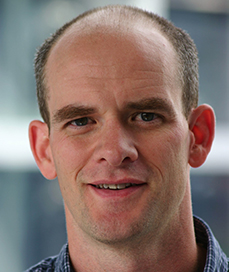
David J. Mooney
Robert P. Pinkas Family Professor
Bioengineering
Harvard University
“Building Immunity with Biomaterials”
Wednesday, December 7, 2016
Abstract: Dysfunction of the immune system underlies many diseases. However, strategies to effectively program an immune response, and reprogram undesired responses. by manipulating a patient’s immune cells are at an early stage. We are creating biomaterials capable of concentrating, interrogating, and manipulating immune cells ex vivo and in the body by controlling, in space and time, the interaction of the immune cells with immunomodulatory agents. The utility of this concept in the development of therapeutic cancer vaccines will be highlighted.
Biography: David Mooney is the Pinkas Family Professor of Bioengineering in the Harvard School of Engineering and Applied Sciences, and a Core Faculty Member of the Wyss Institute. His laboratory designs biomaterials to make cell and protein therapies effective and practical approaches to treat disease. His team created the first biomaterial-based, therapeutic cancer vaccine, currently in a clinical trial for melanoma. He is a member of the National Academy of Engineering and the National Academy of Medicine. He has won numerous awards, including the Clemson Award from the SFB, MERIT award from the NIH, Distinguished Scientist Award from the IADR, Phi Beta Kappa Prize for Excellence in Undergraduate Teaching, and the Everett Mendelsohn Excellence in Mentoring Award from Harvard College. His inventions have been licensed by twelve companies, leading to commercialized products, and he is active on industrial scientific advisory boards.
2015
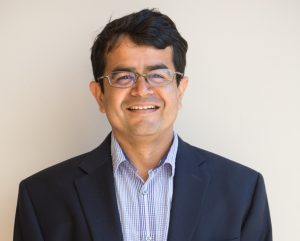
Samir Mitragotri
Professor
Chemical Engineering and Biomolecular Science and Engineering
University of California, Santa Barbara
“Innovative Systems for Effective Delivery of Therapeutics”
Wednesday, October 14, 2015
Abstract: Effective delivery of therapeutics is a major problem in today’s healthcare. For example, in the case of protein and peptide drugs such as insulin, growth hormones, and vaccines, a key challenge is their stabilization and delivery without having to use needles. All proteins are currently delivered by needles, which have several limitations including pain, needle-phobia, and contamination caused by dirty needles. Our laboratory is addressing this challenge by delivering proteins using transdermal patches and oral pills. Neither of these routes is inherently suited for protein delivery since they offer significant diffusive and enzymatic barriers for protein transport. We have developed a number of technologies that overcome these barriers to deliver proteins for the treatment of diabetes, osteoporosis, psoriasis and several other diseases. I will present an overview of these technologies with respect to their principles and applications. Targeting of drugs to specific tissues is also a key challenge in therapeutic delivery. This is especially problematic for cancer and cardiovascular diseases, where the effectiveness of drugs is limited by their poor accumulation at the disease tissue and high accumulation in healthy tissues. Our laboratory is developing nanoparticles that can encapsulate chemotherapeutic drugs and target them to tumors. Our strategy explores biomimetic designs that leverage the principles of natural cells such as platelets and red blood cells to accomplish excellent targeting. I will present an overview of some the targeting strategies for the treatment of breast cancer and vascular bleeding after trauma.
Biography: Dr. Samir Mitragotri is a Professor of Chemcial Engineering at the Univesity of California, Santa Barbara (UCSB). He is also the founding Director of the Center for Bioengineering at UCSB, Professor Mitragotri received Ph.D. from MIT in 1996 and B.S. from the Institute of Chemical Technology, Mumbai in 1992, both in Chemical Engineering.
Professor Mitragotri has pioneered new technologies to deliver medicines without using needles. Effective delivery of medicines to patients for the treatment of life-threatening diseases is a major problem, especially for biopharmaceutical drugs (large molecules) that are increasingly dominating the repertoire of pharmaceutical products. Currently, these drugs have to be delivered by injections. Professor Mitragotri has addressed this challenge by developing innovative technologies for needle-free drug delivery via skin patches and oral pills which are easy-to-use, patient-friendly, and safe. In addition, he has made groundbreaking contributions to the field of targeted drug delivery for the treatment of cancer and vascular diseases.
Professor Mitragotri has published close to 200 papers in leading journals including Science, Nature Biotechnology, Nature Materials, ACS Nano and PNAS. His work has been highlighted in numerous popular and news media including Scientific American, Popular Science, R&D Magazine, New York Times, USA Today and Discover Magazine. His publications have been cited more than 16,000 times (h-index of 72).
Professor Mitragotri has received numerous awards for his work including his election to the National Academy of Engineering (NAE) in 2015. He is also an elected fellow of the National Academy of Inventors (NAI), the American Association of Advancement of Science (AAAS), Controlled Release Society (CRS) and the American Institute of Medical and Biological Engineers (AIMBE). He was among the first to be recognized with the Technology Review Young Inventor award (TR35) for technological innovation and is also a recipient of the Distinguished Alumnus award from Institute of Chemical Technology. Prof. Mitragotri is a recipient of Colburn award and Andreas Acrivos Professional progress award from AIChE.
Professor Mitragotri is an outstanding innovator and entrepreneur. He has put an extraordinary emphasis on converting his discoveries into clinically usable technologies for the benefit of patients. He is an inventor on over 100 issued and pending patents that have been licensed by ten companies. He has co-founded seven companies which have developed (and are developing) over 30 products in therapeutics, diagnostics, and personal care. Products developed by his companies have received Edison awards for Innovation on three occasions.
2014

James C. Liao
Ralph M. Parsons Foundation Professor and Chair
Chemical and Biomolecular Engineering
University of California, Los Angeles
“Rewriting the Pathways to Life”
Wednesday, October 8, 2014
Abstract: Production of chemicals and fuels using biological method is a desirable goal that has been pursued for decades, if not centuries. Although success stories have been increasing recently, the biological process is still difficult to compete with traditional chemical processes. One of the major limitations of biological processes lies in the central pathways that support all life processes on earth. In particular, Glycolysis, a fundamental metabolic pathway in life that exists in almost all organisms to decompose sugars, proceeds in a way that loses 1/3 of the carbon to CO2 when producing most of the fuels and chemicals. As a result, almost all biofuel and biochemical production processes suffer a significant loss in yield. The pathway proceeds through partial oxidation and splitting of sugars to pyruvate, which in turn is decarboxylated to produce acetyl-coenzyme A (CoA) for various biosynthetic purposes. The decarboxylation of pyruvate loses a carbon equivalent, and limits the theoretical carbon yield to only two moles of two-carbon (C2) metabolites per mole of hexose. This native route is a major source of carbon loss in biorefining and microbial carbon metabolism. In this talk, we will discuss the design and construction of a non-oxidative, cyclic pathway that allows the production of stoichiometric amounts of C2 metabolites from hexose, pentose, and triose phosphates without carbon loss. This pathway, termed Non-Oxidative Glycolysis (NOG) enables complete carbon conservation in sugar catabolism to acetyl-CoA, and can be used in conjunction with CO2 fixation and other one-carbon (C1) assimilation pathways to achieve 100% carbon yield to desirable fuels and chemicals.
Biography: Dr. James C. Liao is currently Ralph M. Parsons Foundation Professor and Department Chair of Chemical and Biomolecular Engineering of UCLA. He is a pioneer in Metabolic Engineering and Synthetic biology. He received his BS degree from National Taiwan University and PhD from University of Wisconsin-Madison. After working as a research scientist at Eastman Kodak Company, Rochester, NY, he started his academic career at Texas A&M University in 1990 and moved to UCLA in 1997. He received numerous awards and recognitions. The more recent ones include the Presidential Green Chemistry Challenge Award (2010), and the White House “Champion of Change” for innovations in renewable energy (2012). In 2013, he was elected to the National Academy of Engineering, and received the ENI Renewable Energy Prize, bestowed by the President of Italy. He received the National Academy of Sciences Award for the Industrial Application of Science in 2014.
2013

Melody A. Swartz
Profesor Ordinaire
Institute of Bioengineering, Swiss Institute of Experimetnal Cancer Research, Institute of Chemistry and Chemical Engineering
École Polytechnique Fédérale de Lausanne
“Lymphatic Vessels: Where Biotransport Meets Immunity”
Wednesday, December 4, 2013
Abstract: While the traditional view of lymphatic vessel function is to drain excess fluid from peripheral tissues and return them to the blood circulation, there is a growing appreciation for lymphatic endothelial cells (LECs) as important players in immunity, as they are the first cells that come into direct contact with peripheral antigens, cytokines, danger signals and immune cells travelling from peripheral tissues to lymph nodes. They also form conduits in the lymph node that direct different molecules to different cells, for example to B cells and immature dendritic cells, in turn helping to regulate the spatial and temporal kinetics of antigen presentation.
Our lab aims to understand how lymphatic transport functions affect and regulate immunity, which has led to new discoveries of LEC immune functions. For example, we recently demonstrated that LECs can take up exogenous antigens and load them intracellularly onto MHC class I molecules (a process referred to as cross-presentation), and directly present them to naïve T cells, leading to immune tolerance. The extent to which LECs scavenge vs. transport antigens depends on danger signals and cytokines present locally, which they also sense. Furthermore, in contrast to passive drainage, which is driven by translymphatic pressure differences, we are now appreciating the degree to which LECs can actively transport fluid and molecules by nonspecific vesicles. By directly controlling local lymphatic drainage rates, LECs not only regulate the kinetics of antigen transport to the lymph node but also modulate local interstitial flow. This interstitial flow can, in turn, help direct dendritic cells to the lymphatic vessel by virtue of a phenomenon we have termed autologous chemotaxis, whereby DCs express both lymphoid chemokines and their receptor and upon secretion, local gradients form by interstitial flow, chemotactically directing the DC to the lymphatic vessel. Thus, lymphatic vessels help shape immune responses through both physical and molecular mechanisms that are inherently coupled. We believe that integrative studies of lymphatic transport physiology with immunobiology is critical in revealing and understanding the key roles that lymphatic vessels play in cancer progression and metastasis as well as chronic inflammation and autoimmunity.
Biography: Melody A. Swartz is Professor in the Institute of Bioengineering and the Swiss Institute for Experimental Cancer Research in the Faculty of Life Sciences as well as the Institute of Chemical Sciences and Technology, of the Ecole Polytechnique Fédérale de Lausanne (EPFL). Previous to moving to Lausanne, she was an Assistant Professor in Biomedical Engineering and Chemical Engineering at Northwestern University. She holds a BS from the Johns Hopkins University, and a PhD from Massachusetts Institute of Technology. She undertook postdoctoral studies at Harvard Medical School in Boston. Trained as a bioengineer, she uses quantitative approaches in cell biology and physiology, including biotransport and biomechanics, to investigate the role of the lymphatic system in physiology and pathophysiology. She is particularly interested in the role of the lymphatic drainage in maintaining immunological tolerance in homeostasis, and the role of lymphangiogenesis in controlling inflammation as well as inducing pathological tolerance in cancer. Her lab applies this knowledge to develop novel immunotherapeutic approaches in cancer, including lymph node-targeting vaccine approaches.
2012 and Before
2012: Arup K. Chakraborty, Massachusetts Institute of Technology
2011: Frank S. Bates, University of Minnesota
2010: David A. Tirrell, California Institute of Technology
2009: Mark E. Davis, California Institute of Technology
2008: Jay D. Keasling, University of California at Berkeley
2007: Kristi S. Anseth, University of Colorado at Boulder
2006: Adam P. Arkin, University of California at Berkeley
2005: Frances H. Arnold, California Institute of Technology
2004: Deborah E. Leckband, University of Illinois at Urbana-Champaign
2004: Stephen R. Quake, Stanford University
2003: Larry V. McIntire, Rice University
2002: Sangtae Kim, Lilly Research Laboratories
2001: Chaitan S. Khosla, Stanford University
2000: W. Mark Saltzman, Cornell University
1999: Jeffrey A. Hubbell, University of Zürich
1998: George Georgiou, University of Texas at Austin
1996: Douglas A. Lauffenburger, Massachusetts Institute of Technology
1995: Lewis S. Edelheit, General Electric Company

